How can you effectively evaluate and optimize your content to outperform your competitors? That’s where the power of an SEO page audit comes in.
With thruuu’s’ SEO page audit tool, you’ll access a comprehensive set of features beyond mere keyword analysis.
You can compare your content’s structure, headings, word count, and more against the top-ranking pages in the search engine results pages (SERPs).
By leveraging this information, you can fine-tune your content strategy and boost your chances of surpassing your competitors.
Let’s dive in and discover how an SEO page audit can be your secret weapon for success in the ever-evolving world of search engine optimization.
Overview of the Page Audit tool
- Page Comparison: Compare your page directly against your competitors to gain insights and identify areas for improvement.
- Content Recommendations: Receive personalized recommendations on optimizing your content, including word count, content structure, and headings.
- Missing Keywords Analysis: Discover crucial keywords your competitors are using but missing from your content.
- Heading Structure Evaluation: Evaluate and optimize your heading structure to align with top-performing pages in the SERPs.
- Word Count Optimization: Determine the ideal word count for your page based on target keywords and top-ranking pages.
- Whitelabel Reporting: Generate professional and customized reports to share with clients or team members.
- Shareable SEO Audit: Easily share audit results and reports with team members, clients, or stakeholders for collaboration and discussion.
- ChatGPT Insights: Access AI-powered insights from ChatGPT to enhance your content strategy and to receive valuable recommendations.
Live SERP data power our SEO Page Audit tool: The analysis and recommendations you receive are based on up-to-date information from search engine results pages (SERPs).
Page Audit Workflow
Auditing content is super simple.
- First, analyze a SERP.
- Then enter the URL of the Page you want to audit.
- Finally, review the audit and apply the recommendations on your page.
The audit process will compare your page versus the SERP and give your recommendations.
Explore the recommendations and detailed audit to update your page. A good practice is creating a content brief highlighting all the changes to apply to your content.
Watch this video or continue reading the tutorial for detailed explanations.
Steps to Audit a Page
Please note that the Audit Page Tool is available for free and with unlimited SEO audits to subscribers. To access this feature, you need to subscribe.
Step 1 – Analyze a SERP
To audit a page, you need to start with a SERP analysis. You can either start a new scrape or visit your history using an older SERP analysis.
You can learn more about our SERP analysis tool and browse some tutorials here.
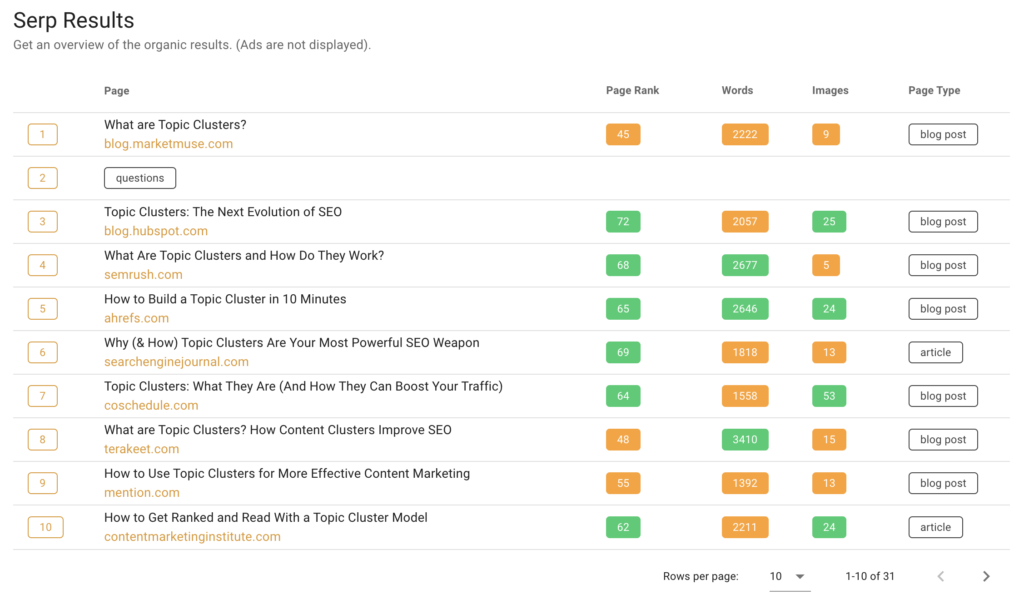
Step 2 – Enter the URL of the Page to Audit
Once you are on a SERP Analysis, you will see an action at the top, “Audit URL.” Hit this button and then enter the URL of the page to audit.

The process will take 1 minute to complete. In a few seconds, you will already get a preview of the main metrics and how your page is compared against the SERP.
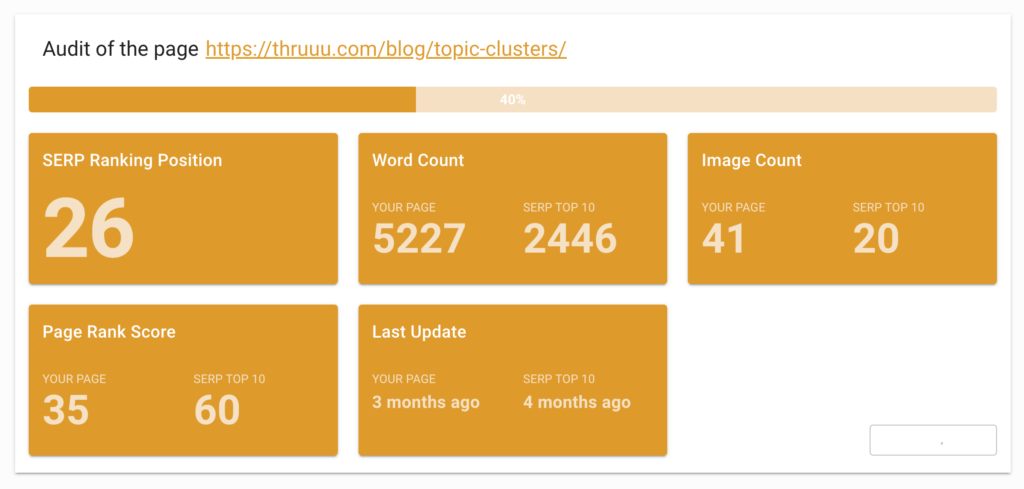
Click “SHOW DETAILS” to open the audit.
Please note that you can also access your previous audits from the Page Audits page in the main menu.
Step 3 – Explore recommendations
You’ll receive a comprehensive list of actionable recommendations upon reviewing the results.
This overview highlights the specific areas where improvements can be made to optimize your page effectively.
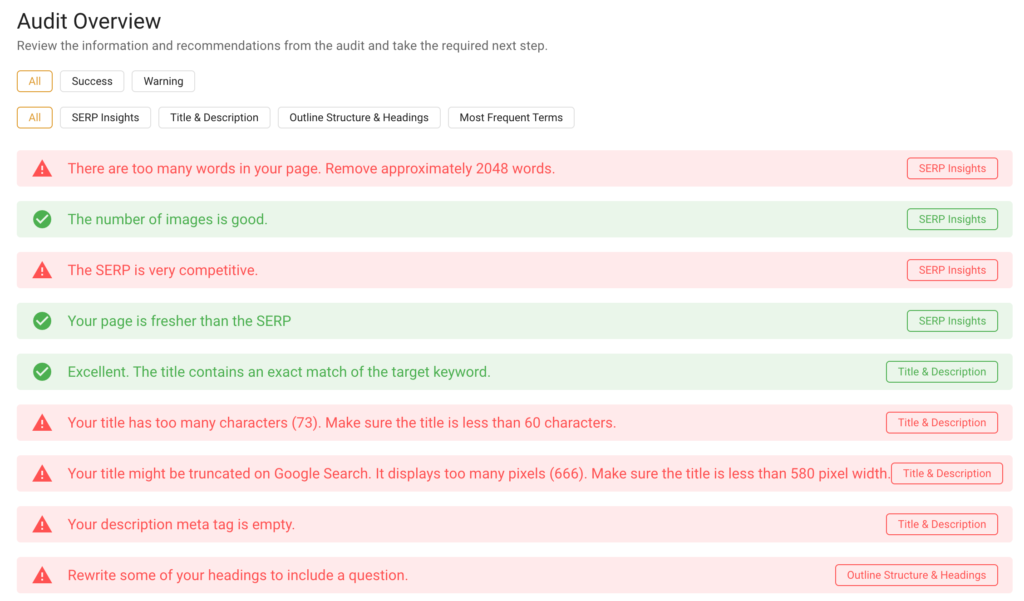
If you continue to scroll down, you will get detailed reports and their recommendations.
Step 4 – Check the main SERP metrics
The SERP Insights report shows how your content compares to the main metric of Google’s top 10 ranking pages. You can compare your page versus:
- Word count
- Image count
- Page rank score
- Last update
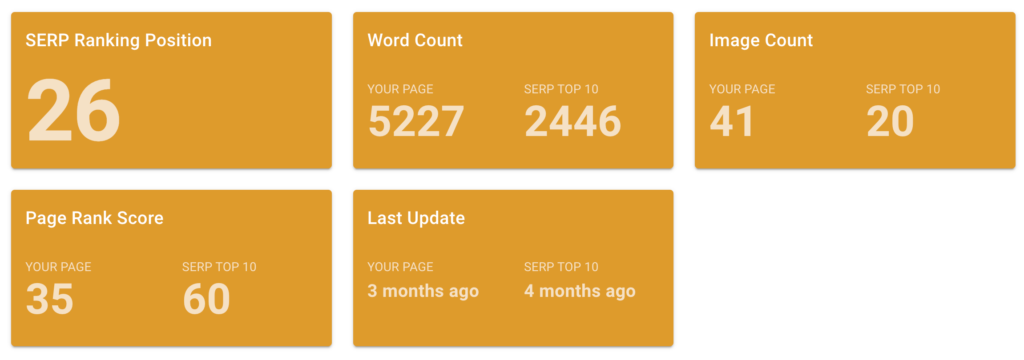
The audit also displays the SERP view so that you can have a look at your main competitor from this page as well.
Step 5 – Improve your title and description
The Title and Description report displays great information to stand out in the Google SERP.
For the title tag and meta description, you get the following information:
- The number of characters
- The pixel width
- A Google preview for desktop and mobile
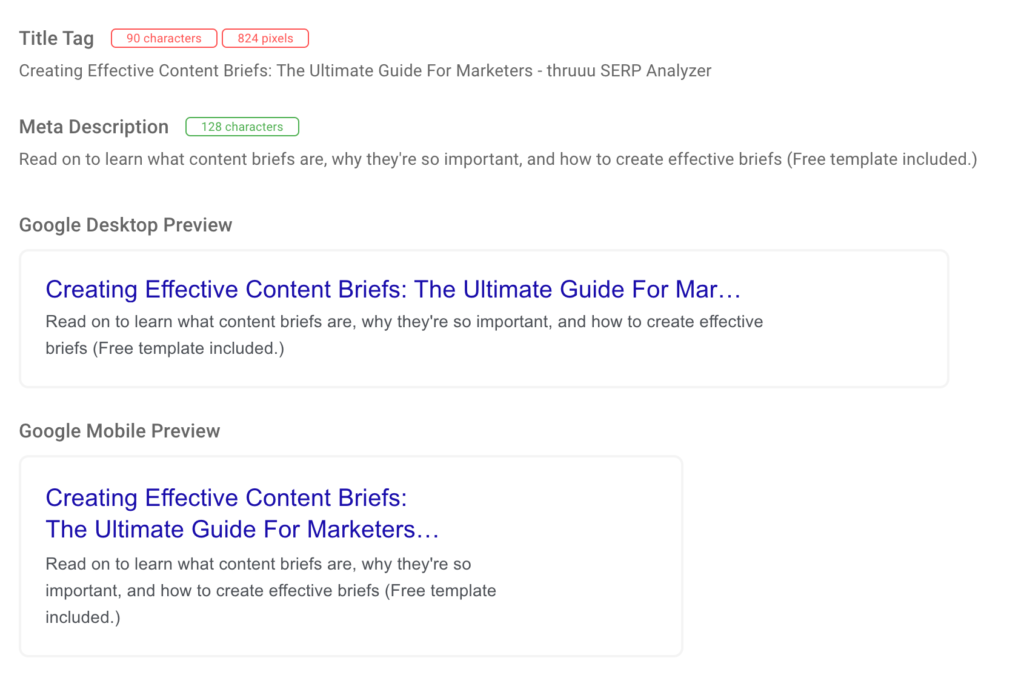
On top of the “default” recommendations, you also get recommendations from ChatGPT. It analyzes your title versus the one of the SERP and gives you advice about things to improve and titles and description suggestions.
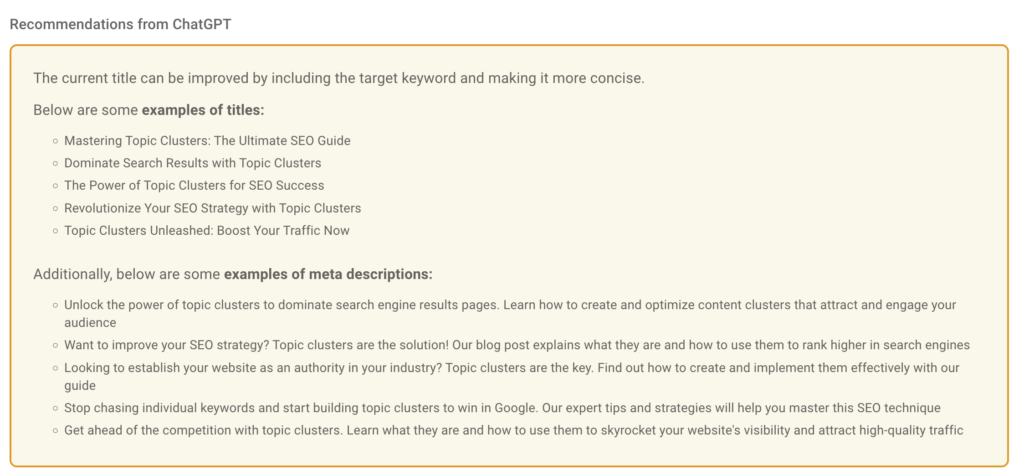
NOTE: ChatGPT recommendations is only available to users with an Agency Plan
Step 6 – Update your headings
The Outline Structure & Headings report gives you awesome information.
The audit analyzes the most frequent headings from the top-ranking pages and checks which ones are in your content.
It helps you to check if you are not missing any important information.
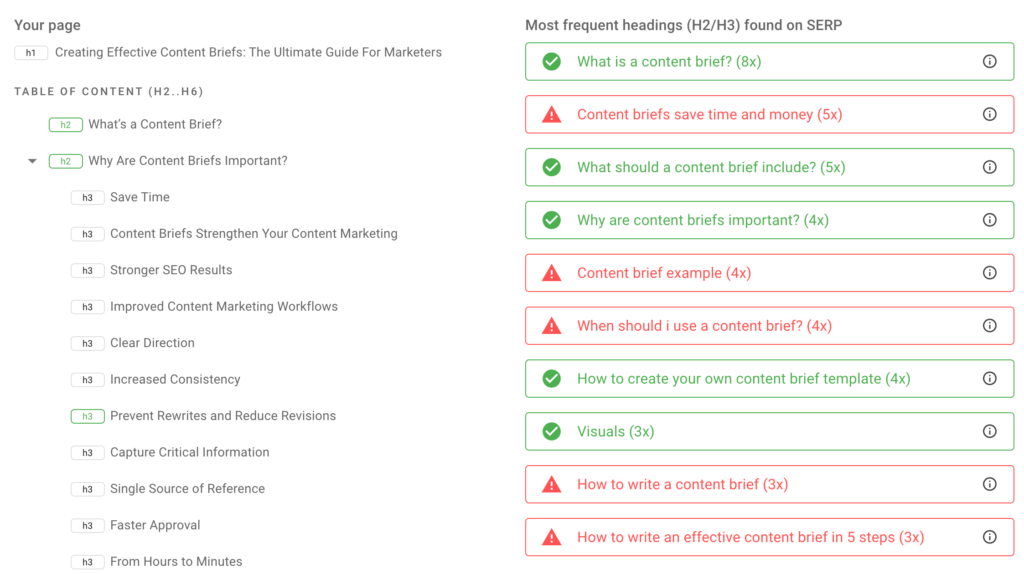
Also, you know that it is essential that you come up with a new angle in your copy to craft the perfect content outline. The audit also checks if you have unique headings: headings that your competitors do not use.
If you don’t have enough of them, maybe you should start finding a new angle.
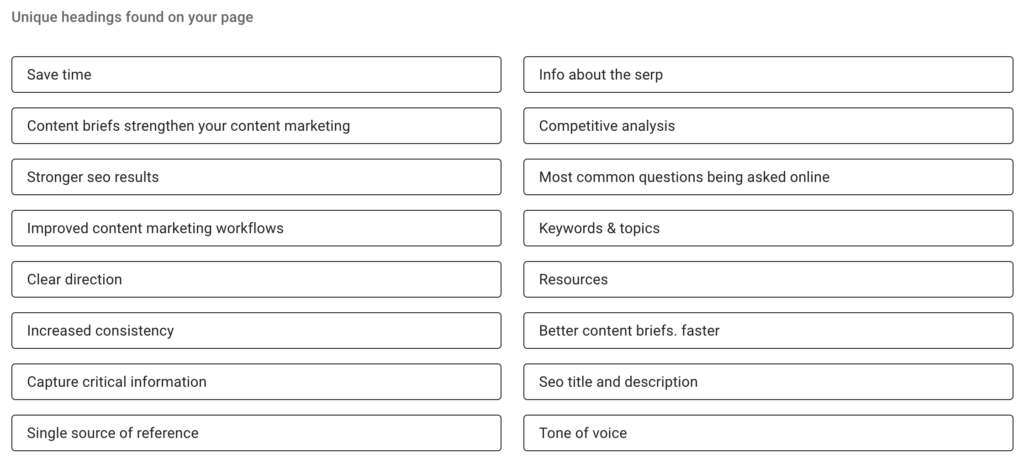
Finally, you will also get a ChatGPT recommendation. It will tell you what is good and what is wrong in your heading structure. You will also get suggestions for new headings.
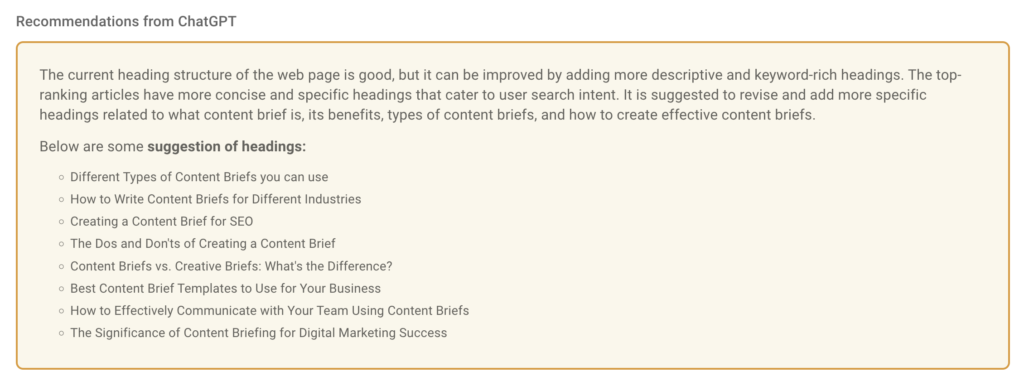
Step 7 – Add missing keywords
The most frequent term report is straightforward. It analyses the most frequent keywords found in the top-ranking content of Google and compares them against yours.
You will find three color indications:
- Green means that you are using the keyword in the range of your competitors
- Yellow means that you are using the keyword in your content, but it is either over-optimized or under-optimized
- Red means that the keyword is simply missing from your content

Regarding the range, each keyword indicates its frequency in your content, with the minimum and maximum occurrences observed in the SERP.
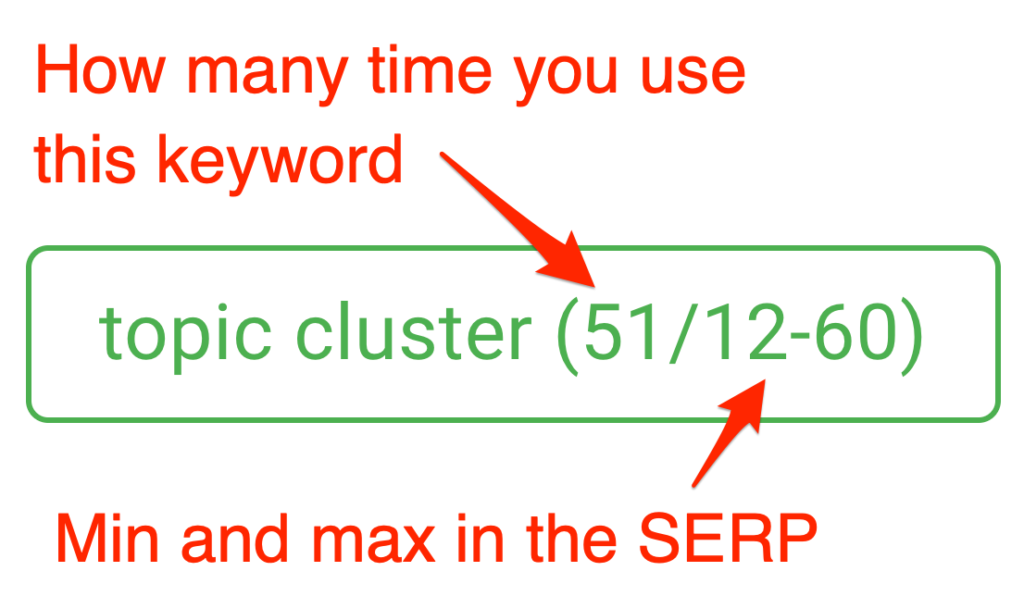
ChatGPT is also used here to provide ideas for new topics and keywords to include in your content.
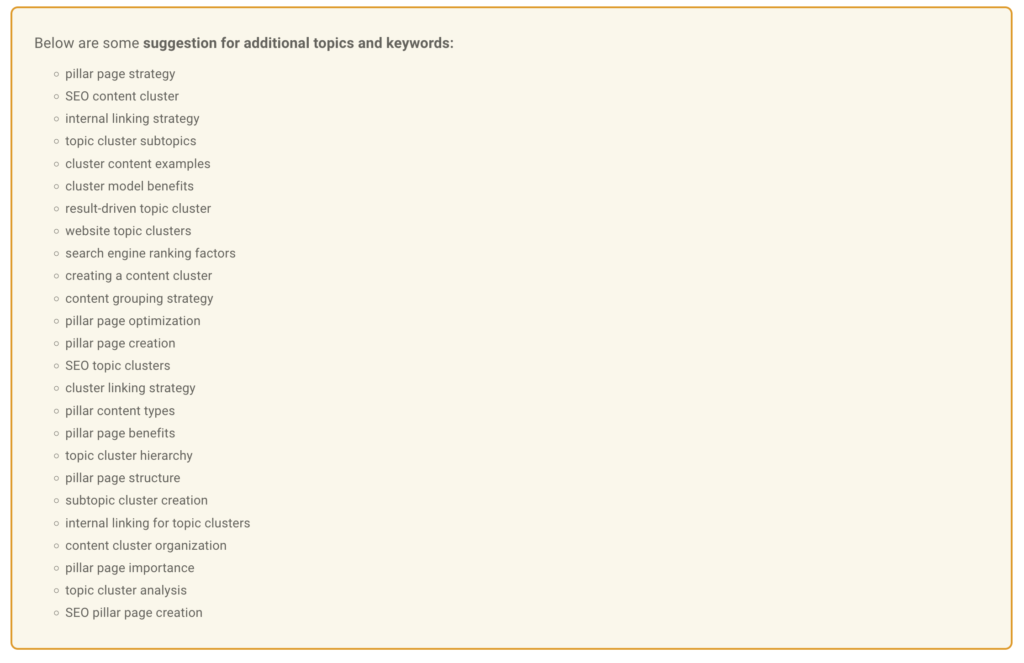
Step 8 – Leverage PAA and Related Searches
The last report is a bit different as it won’t compare your page versus the other pages ranking on the SERP but with the PAA and Related Searches.
This report examines how frequently a PAA question or a related search term appears in your content.
It’s important to note that this audit looks for exact matches of these terms, and no specific recommendations are associated with this report.
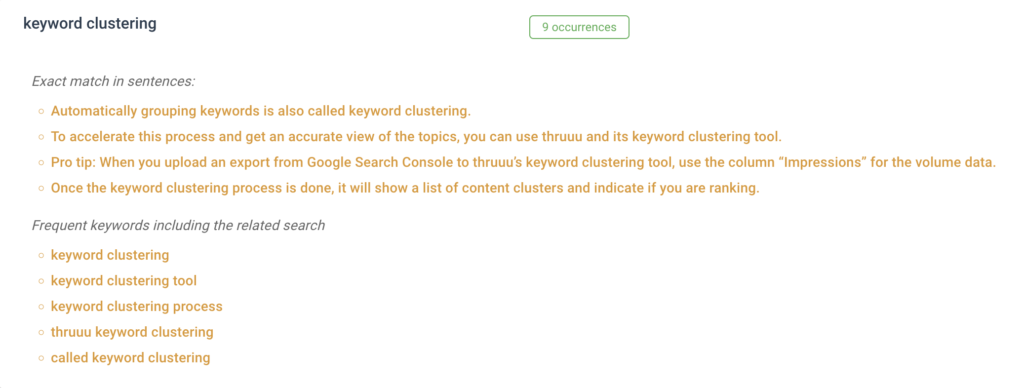
Understanding if you cover the most frequent questions asked by your audience is very important especially when writing FAQ Blog Post.
Step 9 – Export and Share Audit
Ultimately, you can share your audit with your team or clients.
You can export the audit as a white-label document. Feel free to adapt it and add more details before sharing it with your customers.
Note: The export feature is only available to users with an Agency Plan.
You can also create a public link to the audit and share it with anybody.
Note: The sharing feature is only available to users with a Pro or Agency Plan.
Step 10 – Restart an audit
Once you’ve implemented the recommendations, updated your content, and published the changes, you can initiate a new audit to check if all the green marks are completed.
To restart an audit, simply access the list of audits and click on the restart icon.
Additionally, from this view, you can delete or share an audit.
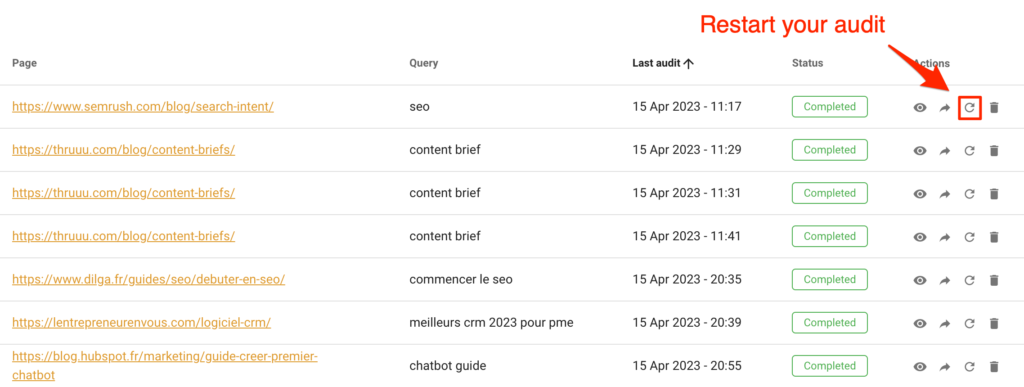
Bonus Step – Audit Pages of your Topic Clusters
The Page Audit tool has been seamlessly integrated into the Keyword Cluster tool, creating a seamless and efficient workflow for your content analysis.
You can analyze the content for every cluster and get insights about the ranking pages. If you find that one of your pages is also ranking for a particular cluster, you can effortlessly audit its content and compare it with your cluster competitors.
This enables you to identify areas for improvement and optimize your content accordingly.
The best part is that you have the freedom to conduct audits for any page within any cluster. Whether you want to optimize existing pages or explore new content opportunities, you can easily audit and refine your pages to align with the characteristics of each cluster.
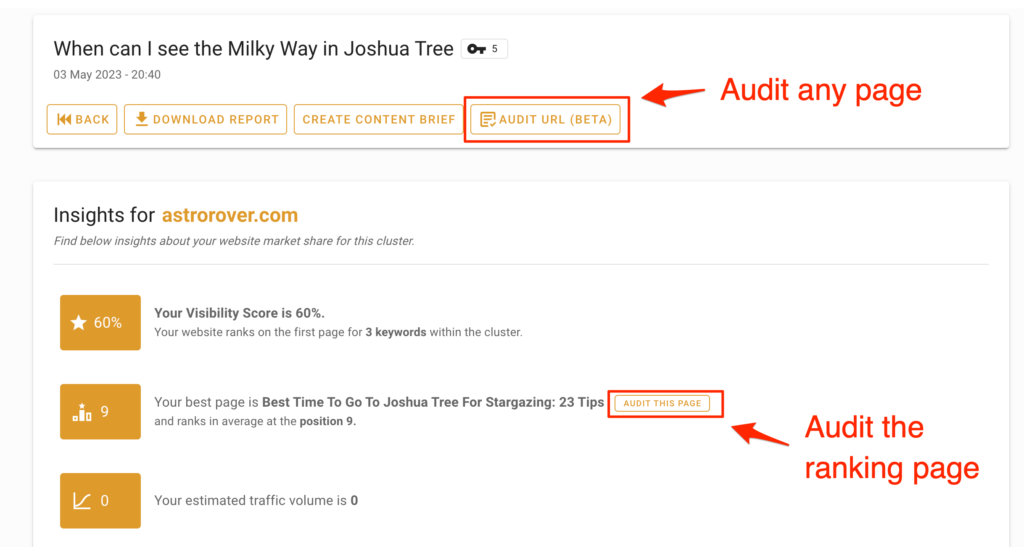
Empower Your Content Team
Our end-to-end content optimization solution empowers your team to crack the Google algorithm, craft exceptional content, and achieve remarkable organic search results.
